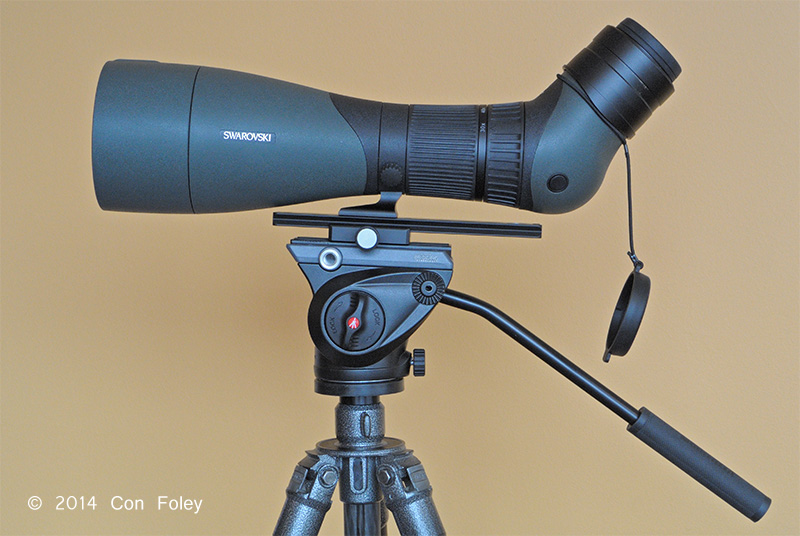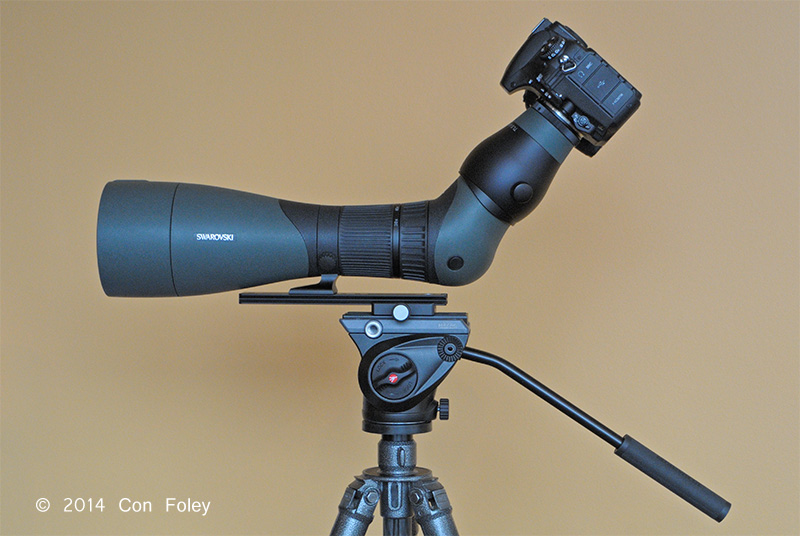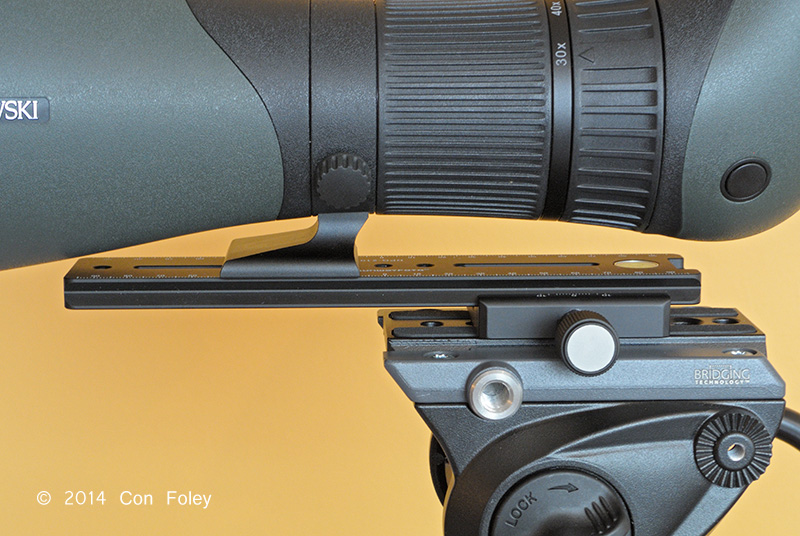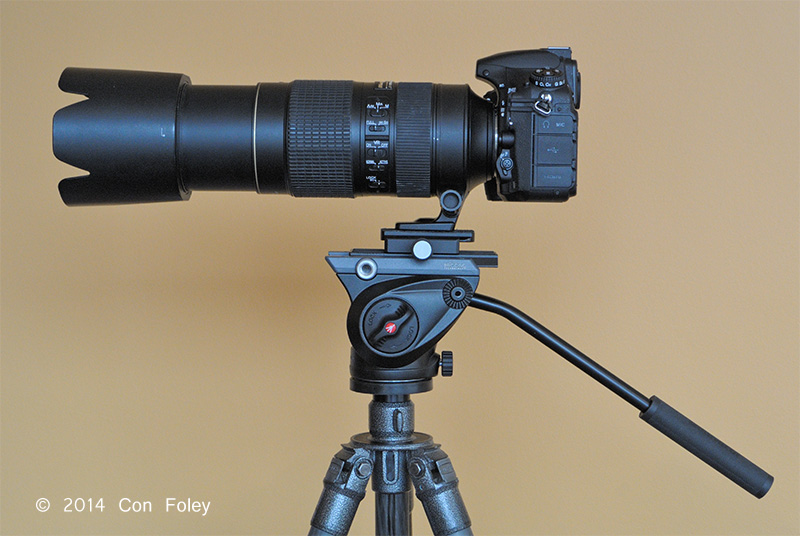I recently purchased the Swarovski ATX-95 30-70X spotting scope for some no excuses bird watching !
Next of course would be some method to take photos. After seeing a great bird, who doesn’t want a photo or video to capture the moment? Lots of scope to camera adapter methods exist, from smart phone adapters, to compact camera adapters to full DSLR adapters. Being primarily a DSLR user, I opted to go the DSLR adapter route.
Over the years, there have been a myriad of methods to adapt cameras to scopes, including DSLRs. Swarovski’s present version introduced in 2012 is to recommend the use of their TLS APO adapter. This is basically a fixed focal length (about 30mm), fixed aperture (around f5.6) and fixed focus distance (around 2 feet) lens that you can quickly mount on your camera with a T2 adapter and slide over the eyepiece of your scope. From this point on you will have manual focus using the scope’s focus mechanism. If your camera is in aperture priority mode you will also have auto exposure. My D810 automatically switches to Center Weighted Metering. Spot Metering can also be selected. The Swarovski TLS APO adapter vignettes on a full frame camera. But crop mode cameras will work, and Nikon lets you select a number of crop modes on their full frame cameras. The 1.2 crop mode works with correctable minor vignetting, and the 1.5 crop mode works with no vignetting.
By the way, don’t expect any keepers if you take photos with your DSLR and the Swarovski TLS APO lens attached. There is an unfortunate YouTube video posted on the Internet which suggests you can use the TLS APO adapter as a 30mm lens. This is not true. You will have to guess the fixed focus distance (around 2 feet) and the depth of field is fairly shallow. But Swarovski should know the characteristics of their scope well, so focusing on the image the scope projects should be designed in to this adapter and it should serve it’s function well.
But now we have the issue of how to quickly switch the balance point between a scope with no camera attached, or one with a relatively heavy DSLR attached. The ATX-95 30-70X weighs in at about 2.1KG without camera, and the Nikon D810 weighs about 0.9KG body only. This is pretty close to what many other DSLRs will weigh, although some will be a bit lighter. This is actually a bit over spec for the selected video head, but is still workable.
The Manfrotto MVH500AH Fluid Video Head is one of the most popular heads for birding scopes. It balances a weight typical of many scopes (spec’d is 2.4KG with 55mm center of gravity), without being overly expensive or heavy. So I went down this route, but the first obstacle is how to balance the very different centers of gravity of the scope without camera, and the scope with camera. After trying several different lengths of Manfrotto plates at a camera store, we gave up with the realization that nothing in stock provided enough movement range to balance the scope.
But an inspirational switch to the Arca-Swiss mounting system gave us all the flexibility we needed. First shown is the scope without the camera mounted on the Manfrotto head with Manfrotto plate, but with an Arca-Swiss adapter and long Arca-Swiss rail attached. There could be many choices among long rails, but I purchased a Sunwayfoto DPG-210 Multi-Purpose Rail. It’s nicely made and I found their service to be good. Also there could be many Arca-Swiss adapters to chose from, but I purchased a Sunwayfoto DDC-60i Screw-knob Clamp. It should be noted that all of this was tried out and fitted at a traditional brick-and-mortar camera store with the assistance of a knowledgable salesperson. In this way we both knew everything worked. Mail order has it’s place, but good old fashioned hands on is still the best.
Now shown is the balance point without camera.
Next up is the same setup but with the Swarovski TLS APO adapter and Nikon D810.
Now notice the balance point with the camera, it is far forward of the prior balance point. Yet, it is easy to quickly adjust the balance point with a half turn on the Arca-Swiss adapter and by moving the long Arca-Swiss rail.
Now we have a system without being too expensive or heavy that can rapidly adjust balance points depending on the camera system attached to the scope, whether it be DSLR adapter or compact camera adapter or iPhone adapter. And as a bonus, since our mounting system has now been converted to Arca-Swiss we can mount any normal DSLR with telephoto lens via the Arca-Swiss mounting system (within the weight limits of the Manfrotto head).
Now in all fairness to Swarovski, they do make a balancing rail, the SSR II Balance Rail. But this is a bit more expensive and doesn’t give you the option to mount either Manfrotto or Arca-Swiss plates, but only Swarovski scopes.
Good birding !
Tags: Arca-Swiss, birds, Digiscoping, Manfrotto, Singapore, Swarovski






Cool stuff !
Excellent information; just what I needed to help me with my purchase!
“By the way, don’t expect any keepers if you take photos with your DSLR and the Swarovski TLS APO lens attached”
why is that? (too high ISO necessary?).
soorry, wrong question. Now I understand…. (you cant take photo with TLS APO alone